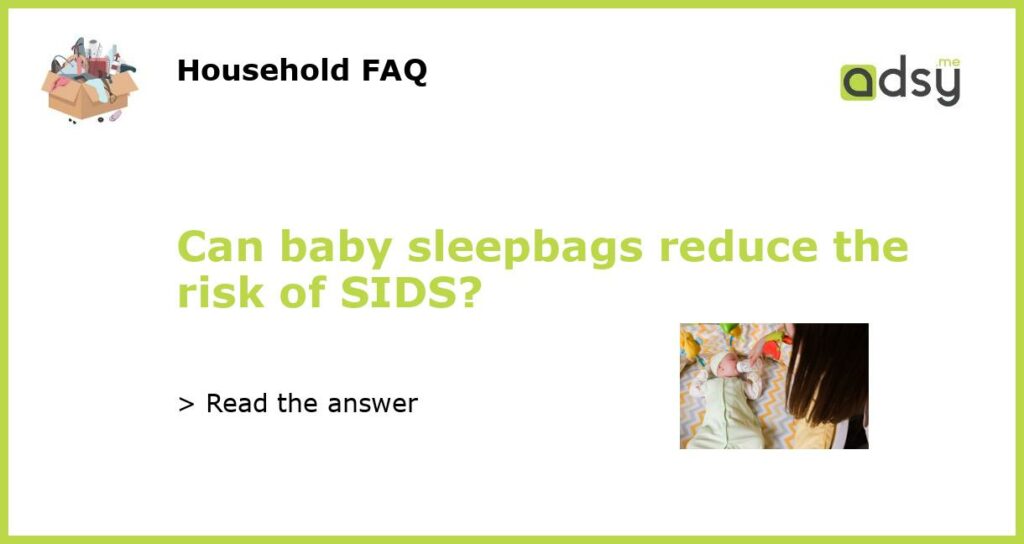What is SIDS?
Sudden Infant Death Syndrome (SIDS) is the unexplained death of a seemingly healthy baby, usually during sleep. SIDS is every parent’s worst nightmare, but there are things you can do to reduce the risk of SIDS, such as putting your baby to sleep on their back, using a firm sleep surface, and avoiding overheating. Additionally, one common question parents ask is whether baby sleepbags can reduce the risk of SIDS.
How do baby sleepbags work?
Baby sleepbags, also known as wearable blankets or sleep sacks, are designed to keep your baby warm and cozy while sleeping, without the use of loose blankets that can be a suffocation hazard. Sleepbags come in different sizes, materials, and thicknesses, and should fit snugly around your baby’s arms and neck, but leave room for their legs to move freely. Most sleepbags have a zipper or snap closure that allows for easy diaper changes without taking the whole sleepbag off.
What do studies say about baby sleepbags and SIDS risk reduction?
Several studies have investigated the potential link between baby sleepbags and SIDS risk reduction. One study from New Zealand found that the risk of SIDS was lower in babies who had slept in a sleepbag for at least one sleep compared to those who had not. Another study from England found that the use of a sleepbag was associated with a reduced risk of SIDS compared to the use of blankets. However, it is important to note that a sleepbag is not a guarantee against SIDS, and that other risk factors such as smoking, sleeping position, and overheating should also be addressed.
What are some tips for safe sleepbag use?
If you decide to use a baby sleepbag, there are some tips to keep in mind to ensure safe use. First, choose a sleepbag that is appropriate for your baby’s age, size, and the room temperature. Check the TOG rating (thermal overall grade) to determine the warmth of the sleepbag, and adjust the clothing underneath accordingly. Second, make sure the sleepbag fits snugly around your baby’s neck and arms, without any gaps or looseness that could cause entanglement or suffocation. Finally, do not use any additional blankets or bedding inside the sleepbag, and do not overdress your baby for sleep.
Should you use a baby sleepbag to reduce the risk of SIDS?
While the evidence suggests that using a baby sleepbag can be a safe and effective way to reduce the risk of SIDS, it is important to remember that sleepbags are not a magic bullet. There are other important factors to consider, such as putting your baby to sleep on their back, using a firm sleep surface, and avoiding overheating. However, if you choose to use a sleepbag, make sure to follow the recommended guidelines for safe use and monitor your baby closely for any signs of distress or overheating. Consult with your pediatrician if you have any concerns about SIDS risk reduction or safe sleep practices.






